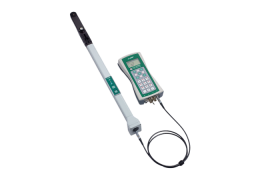This section includes some suggestions for taking measurements in direct sunlight.
Single Sensor with Scattering Correction
- Make sure the sensor calibration is the factory default, and hasn’t been modified by matching to another sensor.
- You don’t need to do a K record for every file, unless sky conditions are very changeable. You can import K records from files that have them to files that need them with the FV2200 Scattering Tool. Follow Procedure 3.10 - Importing K Records.
- You can intersperse K record precursors and single A records. For example, a series of records such as AAAAB...AB...AB...AAAA would turn into KAB...AB...AB...KA.
- You might opt to keep the K’s in a separate file. Whenever you need to do another K reading, re-open that file (named K, for example), and append another 4A sequence (or 3A sequence, but be consistent) into it.
Multiple Sensors With Scattering Correction
Scattering correction requires collecting K record precursors in the field. When using multiple sensors with scattering correction, make sure ALL the sensors have their factory default calibrations (Procedure 1.5 - Resetting Wand to Factory Calibration), and then follow these protocols:
Matching Method
Use Method 1: B / A Pairs in Match for your inter-sensor calibration scheme. Get the data for this once on a clear blue sky day, and then don’t worry about it after that.
With One Operator
If you are operating in separate sensor mode (above and below sensors), and there is only one person to do the work, then plan on doing K readings with the below sensor (see K Records), and putting them in a separate file. Later you can import A records from the above file using Procedure 3.8 - Import A and Adjust A Records - FV2200, and import Ks from the K file using Procedure 3.10 - Importing K Records.
With Multiple Operators
If there are enough people to dedicate someone to doing the K records, then ideally they also have a separate instrument (or just a wand) to dedicate to it as well. However, if the A unit needs to do double duty as the “K unit”, one option is to do nothing but K records (recall that a K record includes a normal A record): Go through a 4A or 3A sequence as frequently as you think is needed, or as frequently as your sanity can stand. In clear blue sky, one K record every 10 to 15 minutes would be plenty. However, if you think you need a higher frequency of reference A records than K records, then follow Procedure 2.12 - Getting K Records on an Above Sensor.
Measuring Non-Uniform Canopies with Direct Sun
In a canopy with large gaps or wide rows or when measuring individual crowns, scattering corrections introduce additional constraints. Model Limitations for Scattering Corrections.
